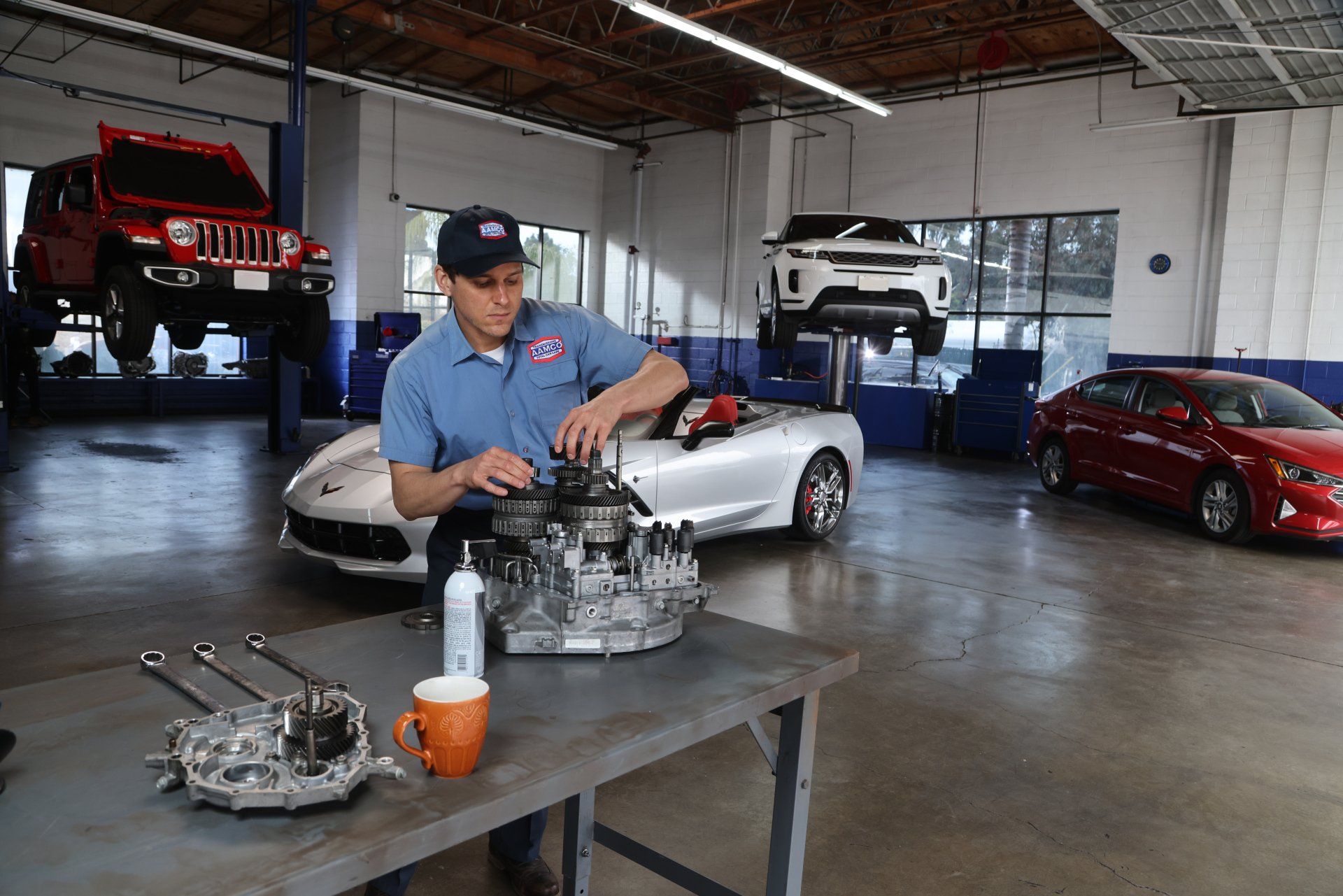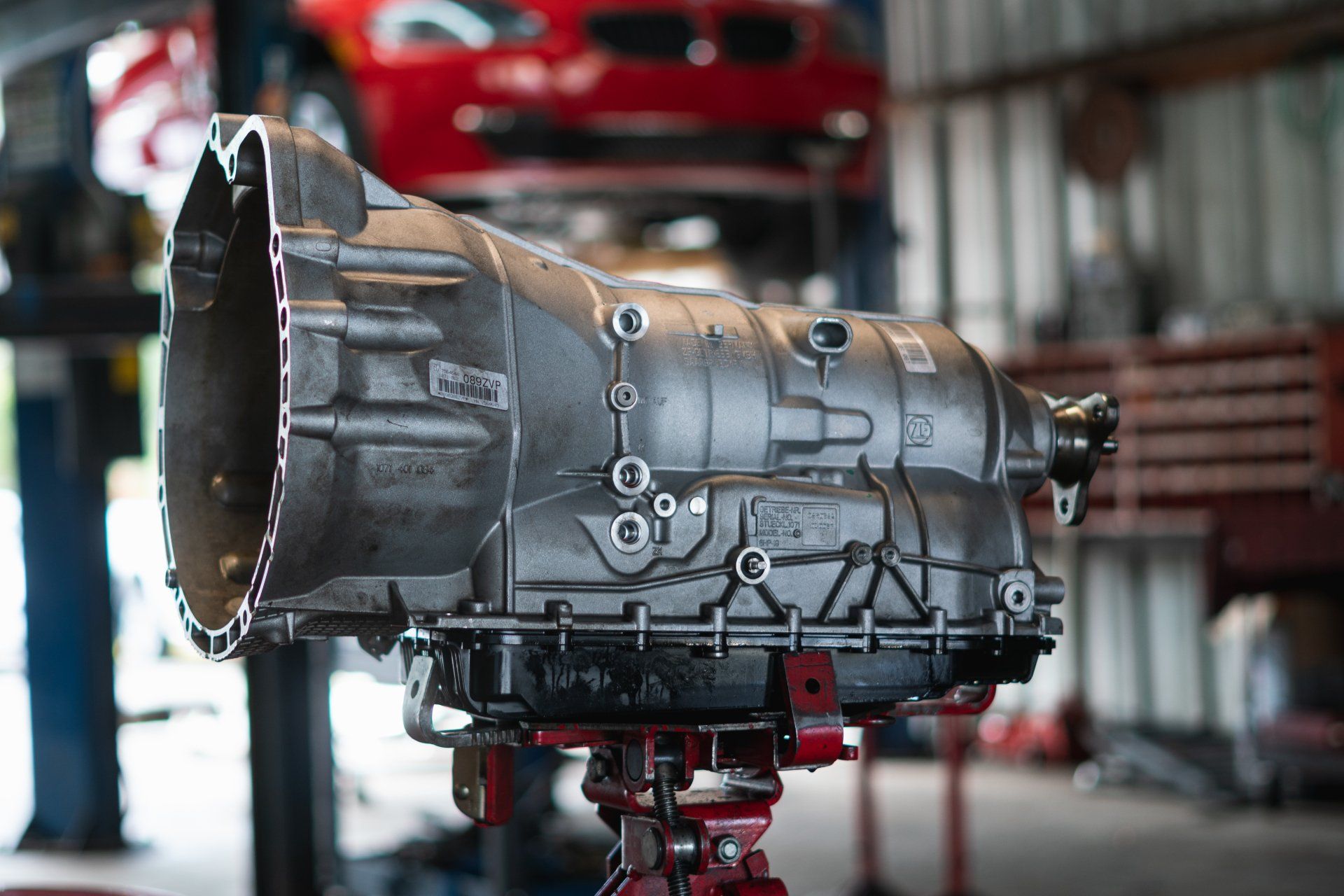Seeing spots? Your car’s fluids each play a key role in keeping essential systems running. Some of them help lubricate, while others maintain proper pressure in hydraulic systems. In any case, if you’re noticing spots under your car from a fluid leak, it can create a stressful situation, especially if you’re not sure which fluid it is. There are a few ways you can get an idea of what car fluid is leaking, though it’s always best to have a mechanic check your car and take care of any necessary auto repairs.
Check Your Fluid Levels
The best way to tell if your car’s fluids may be leaking is to check their levels. Using any other at-home method has its flaws. Three of the most common fluid leaks include engine oil, transmission fluid, and coolant. In modern cars, you should be able to check the level of each of these fluids.
Find Your Engine Oil Dipstick Under the Hood
Let your engine cool, then pop the hood of your car. Bring a paper towel with you and find the dipstick on your engine. Pull it out, wipe it clean with the paper towel, and reinsert it into the engine. When you pull it back out, it should show you the current level of engine oil. You’ll see two lines: one for the minimum and one for the maximum oil level. You want yours to fall between those lines. If it’s near, at, or below the minimum line, you should top off your engine oil – and it’s probably the fluid leaking.
Your Transmission May Have a Dipstick, Too
Many modern cars also have a dipstick to check transmission fluid. If your car has one, follow the same process as you would with checking your engine oil level. Low transmission fluid can cause bigger transmission problems, so if this seems to be the source of your fluid leak, it’s a good idea to get your car to a mechanic as soon as possible.
Open Your Coolant Cap
Ensure your engine is cool before finding the cap with a thermometer on it. If you try to remove your coolant cap while your engine isn’t fully cooled, you risk having hot coolant sprayed on you. With the cap removed, you can see into the reservoir, which should have a max line. If your coolant is too far below that max line, it could be what’s leaking from your car and should be topped off to ensure your engine doesn’t overheat. As with your engine and transmission, a leak from your cooling system should be checked by a mechanic.
Look at Placement of the Leak
Pay attention to where you see drip spots under your car. You can get an idea of which fluid may be leaking based off those spots and where certain systems are located in your car. Some common fluid leaks and their locations include:
- Engine Oil Will Drip Near the Front of Your Car
- Coolant Will Drip Near the Front or From the Exhaust of Your Car
- Transmission Fluid Will Be Close to the Middle of Your Car
While this isn’t a foolproof way to figure out which fluid is leaking from your car, it can help point you and your mechanic in the right direction.
Take Note of Any Smells
A much less precise way of figuring out which fluid is leaking from your car is to pay attention to what you smell. If you get out of your car and smell gas or oil, it’s more likely you’re dealing with an engine oil or transmission fluid leak. On the other hand, coolant has a sweeter smell, so you’re less likely to notice it unless you touch the fluid and smell it. In general, using smell as a way to diagnose a car fluid leak is not a good idea. However, if you smell burning and have fluid leaking, it means you may have a more urgent auto repair that needs to be addressed.
Problems with Your Car’s Fluids? Come to the Mechanics at AAMCO
The best way to deal with a fluid leak is to bring your car to a trusted mechanic. While any information you can provide about fluid levels, location of drips, and any unusual smells can help point your mechanic in the right direction, it’s best to have a professional diagnosis. When it comes to total car care, the mechanics at AAMCO are ready to help, no matter what car problem you’re experiencing.
AAMCO Wichita Blog



